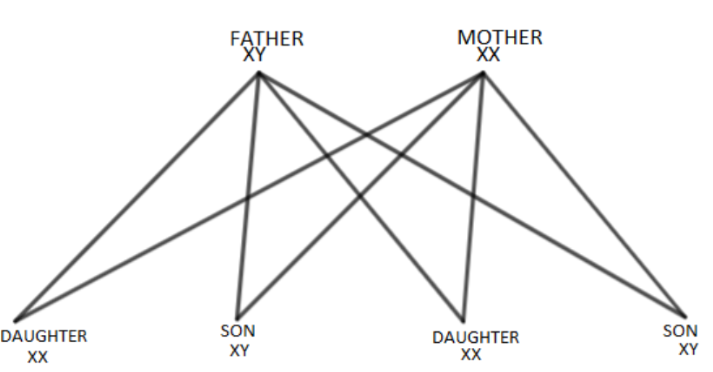(a) The larynx or voice box in males begins to grow at puberty. . Boys develop larger voice boxes than girls so boys will have a deep voice. In males, the growing voice box may be seen as a protruding part of the throat which is called Adam’s apple.
(b) These are those characteristics that help in distinguishing male and female. The characteristics developed during the time of puberty.
In Male:
-
The appearance of mustache, beard, chest hair.
-
Deepening of voice.
-
Hair growth in the pubic and other parts of the skin.
In Female:
-
Increasing the size of the breast and hips
-
Growth of hair at pubic and other parts of the skin.
-
Sex determination in the unborn baby.
Sex determination can be done based on the sex chromosome that fuses together to make the zygote. Every individual has 23 pairs (46 individuals) of chromosomes whether male or female. Out of that 23 pairs, 22 pairs are the same for both males and females. The last one is called as sex chromosome. In the male sex, the chromosome is XY while in the female sex chromosome is XX. During gamete formation the male produces two types of gametes X gamete and Y gametes while the female produces two X gametes.
So, during fusion females will always give 22+X always while males can give 22+X or 22+Y.
Depending on which one fuses with 22+X (given by female) the sex of the unborn baby is decided.
22+X (F) + 22+X (M) = girl child
22+X (F) + 22+Y (M) = boy child
So, X and Y chromosome is the deciding factor for the sex of the unborn kid.












